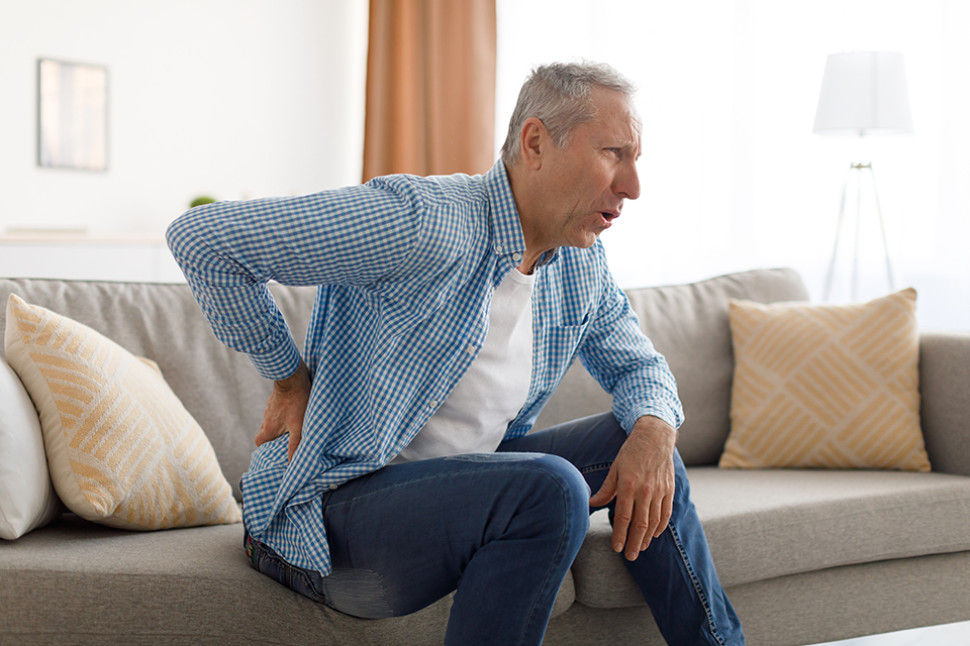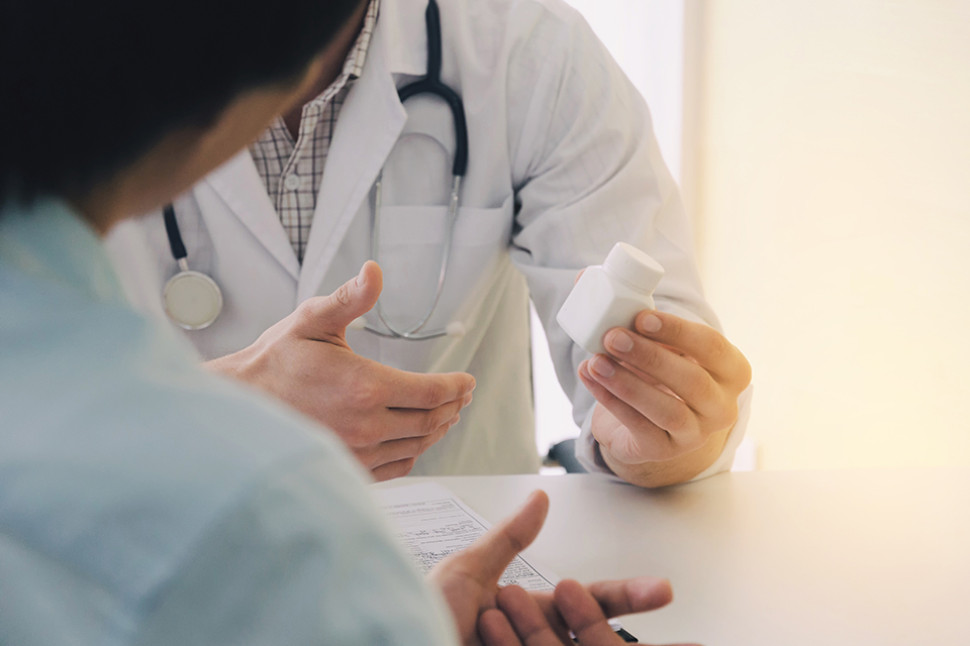Osteoporosis: A Silent Threat to Bone Health

Osteoporosis: A Silent Threat to Bone Health
According to national disease statistics, the estimated number of osteoporosis patients in 2024 is approximately 1.326 million. While about 28,000 patients are under 50, a staggering 1.448 million are 50 or older, indicating a sharp increase in prevalence with age. As South Korea becomes a super-aged society, osteoporosis cases are rapidly rising, making it crucial to understand the symptoms and prevention methods.
What is Osteoporosis?
The term 'osteoporosis' implies numerous holes within the bones. It is a condition where bones become thin and weak, leading to easy fractures even from minor impacts. Osteoporosis progresses in stages, starting with osteopenia, where bone density gradually decreases and the bone's microstructure changes. If this condition worsens, it develops into osteoporosis. In severe cases of osteoporosis, the risk of fractures significantly increases.
Causes of Osteoporosis
Bones are vital organs that support our body. Bone mass typically reaches 90% of its adult level during puberty, increases until the early 30s, and then gradually declines from age 35. Throughout this process, bone remodeling occurs, involving the breakdown of old bone (bone resorption) and the formation of new bone. An imbalance between osteoclasts (cells that break down old bone) and osteoblasts (cells that create new bone) can lead to thinner bones or an increase in small, invisible holes within the bones, weakening them and making them prone to fractures.
Besides aging, other factors can contribute to osteoporosis:
▶ Calcium Absorption Issues: Conditions like gastrectomy, chronic inflammatory bowel diseases, Cushing's disease, and anorexia nervosa can impair calcium absorption, leading to osteoporosis.
▶ Vitamin D Deficiency: Vitamin D helps prevent bone breakdown. As people age, the production of active vitamin D in the skin, liver, and kidneys decreases, especially if vitamin D intake and sun exposure are insufficient.
▶ Medications: Certain drugs like anticoagulants (heparin), anticonvulsants, thyroid hormones, corticosteroids, and diuretics can induce osteoporosis.
▶ Lack of Exercise: Children who are physically active tend to have higher bone density later in life. Weight-bearing exercises like jumping and hopping are beneficial for bone health.
▶ Excessive Alcohol Consumption: Excessive alcohol intake can hinder calcium absorption and reduce bone formation.
▶ Genetics: Genetic factors contribute to approximately 50-80% of osteoporosis risk.
Why is Osteoporosis More Dangerous for Women?
Women are more susceptible to osteoporosis, accounting for over 90% of cases. Women generally have weaker bones than men from a younger age, and the incidence of osteoporosis increases sharply after menopause due to decreased estrogen levels.
The decline in estrogen, which protects against bone loss, leads to rapid bone density reduction around the age of 50. Bone loss is most rapid in the 3-5 years following menopause, with approximately 50% of postmenopausal women developing osteoporosis. Men, on the other hand, typically have stronger bones, experience a later puberty, and achieve peak bone mass later, reducing their risk of osteoporosis.
Symptoms of Osteoporosis
Osteoporosis often progresses without noticeable symptoms, earning it the nickname 'silent disease.' Early detection is challenging, making regular bone density screenings crucial.
However, certain signs may indicate osteoporosis. A height loss of 4 cm or more compared to your 20s could suggest vertebral compression fractures due to osteoporosis. These fractures may not cause severe pain and can be overlooked until detected via X-ray. Additionally, fractures from minor falls or impacts indicate significant bone loss.
Many people mistake knee or lower back pain as symptoms of osteoporosis. However, these are more likely due to osteoarthritis or other causes, as joint pain is not directly related to osteoporosis.
Osteoporotic Fractures
Fractures are the most common and serious complication of osteoporosis, significantly impacting quality of life and survival rates. As osteoporosis worsens, bone strength decreases systemically, leading to fractures from minor impacts or even without any trauma. Fractures can occur in any bone, but the spine and hip are most commonly affected. Wrist fractures are also frequent when people brace themselves during a fall.
Elderly individuals are particularly vulnerable to hip fractures due to decreased flexibility, impaired balance, and weakened bones, often resulting from falls on slippery surfaces or in bathrooms. A previous fracture significantly increases the risk of subsequent fractures, leading to fear of activity and increased dependence. According to the Korean Society for Bone and Mineral Research, the one-year mortality rate after a hip fracture is 21.5% for men and 14.6% for women, highlighting the severity of osteoporotic fractures in the elderly.
▶ Hip Fractures: The hip bone is typically very strong and resistant to fractures from normal falls. However, osteoporosis can weaken the bone, leading to fractures from simple stumbles. Falls backward or sideways are common, and it's crucial to avoid immediate movement after a fall.
▶ Vertebral Fractures: These usually manifest as compression fractures, where the vertebrae become flattened. Even minor impacts like lifting heavy objects or forceful coughing can cause fractures. Vertebral fractures can lead to spinal deformities, abnormal alignment, and excessive stress on surrounding ligaments and muscles, resulting in chronic pain. Multiple vertebral fractures can cause severe curvature of the spine, height loss, and impact overall appearance, affecting mobility, daily activities, respiratory function, and digestive function.
▶ Wrist Fractures: More common in individuals in their 50s and 60s, wrist fractures often occur when instinctively bracing during a fall. These fractures can lead to decreased hand function, deformities, and chronic pain.
Diagnosis of Osteoporosis
Bone density scans, performed while lying down, are the most accurate method for diagnosing osteoporosis. T-scores from these scans are used to assess bone density. A T-score of -1 or higher is normal, -1 to -2.5 indicates osteopenia, and -2.5 or lower indicates osteoporosis. X-rays can also identify compression fractures caused by osteoporosis.
Osteoporosis Treatment
The goal of osteoporosis treatment is to maintain current bone mass by increasing bone formation or preventing bone loss. Various medications are available, and treatment plans are tailored to the patient's condition and potential side effects. Medication is typically prescribed for individuals with a T-score of -2.5 or lower, or for those with a history of fractures, even with a better T-score.
▶ Bisphosphonates: These are the most commonly used medications for osteoporosis, working by eliminating osteoclasts and preventing bone density loss. They are available in various forms, including daily, weekly, monthly, and quarterly injections. Due to potential side effects, treatment is typically recommended for 3-5 years.
▶ Hormone Replacement Therapy: Estrogen therapy after menopause can effectively inhibit rapid bone loss in women, but it is not a standard solution for all women. Therefore, it is crucial to discuss the potential benefits, side effects, and individual risks with a healthcare provider before starting treatment.
Other commonly used treatments include bone formation stimulators (to increase bone formation) and bone resorption inhibitors (to reduce bone breakdown).
Prevention of Osteoporosis
The foundation of osteoporosis prevention is adequate exercise and a healthy diet.
▶ Diet: Calcium is essential for building and maintaining bones. Aim for a daily intake of 1,000-1,200mg of calcium through diet and supplements. Consume calcium-rich foods such as dairy products, anchovies, seaweed, tofu, and green leafy vegetables. Adequate protein intake also aids calcium absorption, but excessive protein supplements or animal protein can decrease calcium absorption.
Vitamin D helps with calcium absorption and is produced in the skin through exposure to sunlight. However, wearing long sleeves or sunscreen can hinder vitamin D production, leading to deficiency. If you have osteoporosis, have your vitamin D levels checked and take supplements if necessary to maintain optimal levels.
Reduce sodium intake, as sodium excretion in urine can lead to calcium loss. Also, avoid alcohol, caffeine, instant foods, fast food, carbonated drinks, and processed foods like white sugar.
▶ Exercise: Regular exercise is crucial for maintaining healthy bones after age 50. Weight-bearing exercises like brisk walking, jogging, stair climbing, and jumping rope are ideal. Aim for 30 minutes or more, 4-5 days a week. Combining strength training 2-3 times a week with daily balance exercises can reduce the risk of falls. If walking is difficult due to osteoarthritis, indoor cycling can be beneficial. Avoid exercises that put pressure on the spine, such as excessive bending, twisting, or vigorous sit-ups.
▶ Lifestyle: Avoid lifting heavy objects and maintain good posture. To prevent falls, ensure adequate lighting at home, install non-slip mats and handrails in bathrooms, remove loose carpets and thresholds, and avoid slippery shoes.
▶ Bone Density Screening: Since osteoporosis is often asymptomatic, regular bone density screenings are essential for monitoring your bone health.








Source :https://blog.naver.com/amc_seoul/224050883802
No comments yet.
